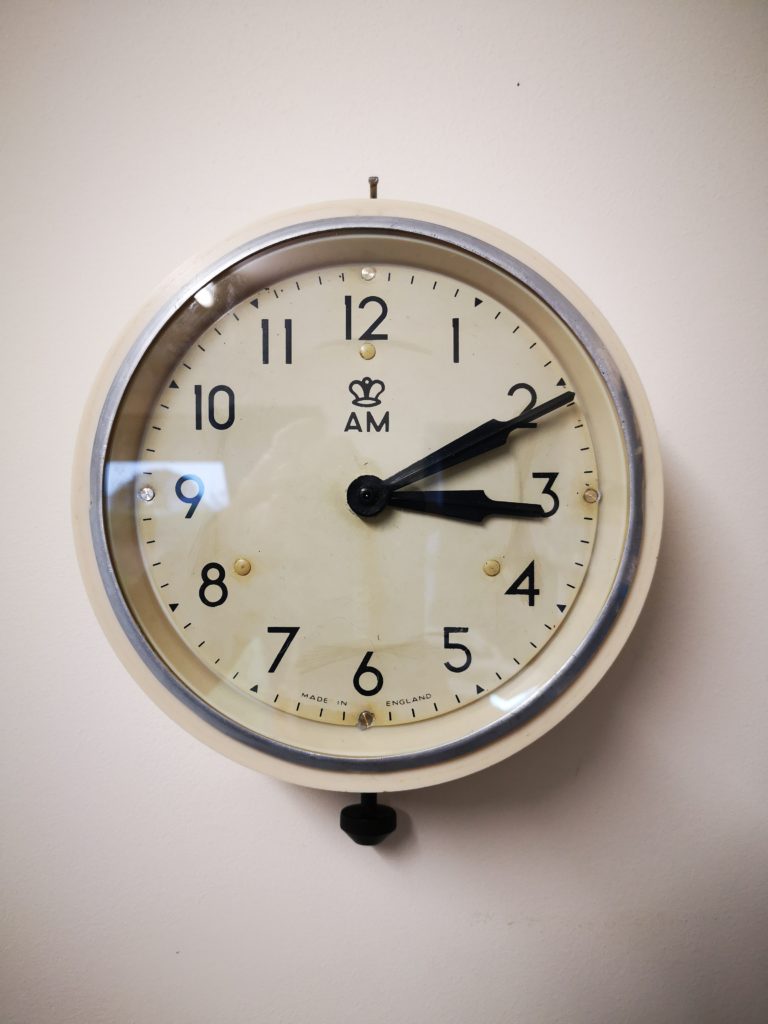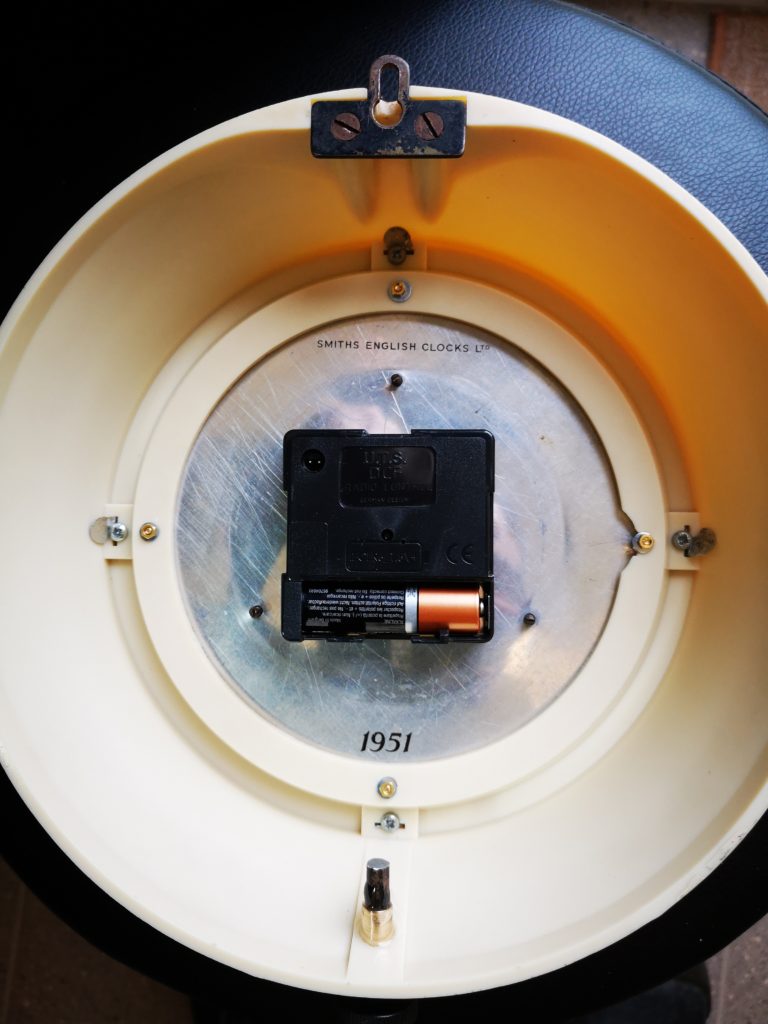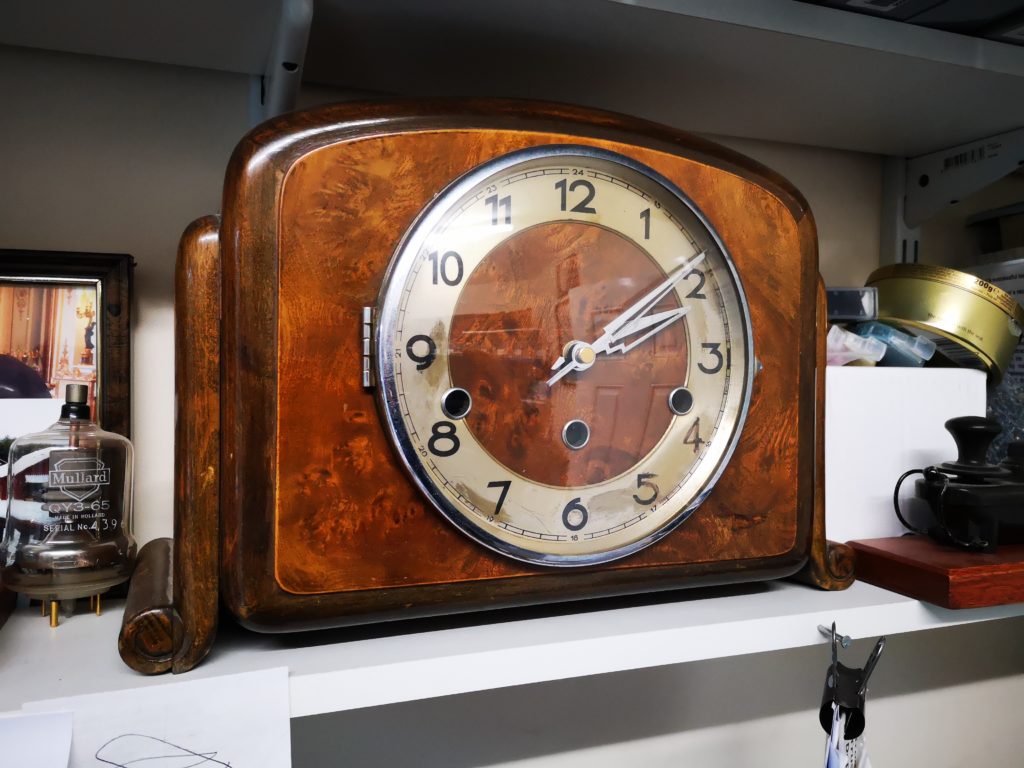If you visit any car boot sale / brocante /yard sale you will almost certainly come across old mechanical clocks that probably have a wonderful history if they could only speak. Their previously loving owners have ‘passed on’ and the inheriting family probably don’t like the looks of the timepiece or just can’t be bothered to wind it up or it simply no longer works which is a big problem with a rapidly diminishing fraternity that know how to fix them.
Now what follows is going to disturb the purists so they should look away.
When I find a specimen that has some character or aspect that appeals to me and has no historic value I will offer the few coins being asked and give the clock a new life. Not by repairing them in the true sense but by fitting a modern time code based radio locked mechanism. Here in Europe we have DCF in Germany and MSF in the UK. DCF in particular has an astonishing geographic range for its signal.
The time code locked mechanisms are available from a number of sources and vary from a basic straightforward hours minutes seconds mechanism to ones with higher torque and some with a pendulum. The pendulum is quite independent of the time keeping but does add character. As supplied the radio locked mechanisms require you to set the hands to either 12 o’clock if you are on European time or 11 o’clock if on GMT and then you pull out a locking pin on the rear of the mechanism and install an AA battery. The mechanism will twitch momentarily and then the hands will start to rotate from the setting position to a set hour position and then hold until the mechanism gets an update from the radio signal. Once locked to the radio signal the clock will be very very accurate. You can check them against time.is and as would be expected they are spot on. When clocks need to be seasonally change the mechanism automatically updates. When the battery dies you simply put a new one in and the clock resets itself to time.
I have modified many clocks in this way and gifted quite a few to friends and family. I try wherever possible to retain the original hands and sometimes this involves a little lathe work to modify the mounting bosses.
There are two examples below including my latest find, an ex British Air Ministry office clock dated on the back as 1951. I am quite pleased with how this one has cleaned up and it is now heading to France to hang in my workshop out there.
So next time you see an unloved traditional mechanical clock gathering dust give some thought to giving it a new lease of life.



Similar or related subjects : –
- Arduino Processor Reference Clock Accuracy
- 3D Printed Length Gauge for In Barrel Mainsprings
- The “Modern Clock” by Goodrich
- Microset Timer interface using Fusion 360 3D model with Fusion Electrical
- Clock adjuster rod for measuring spring and fusee drive power
- Update notes on modifications to the Devon Sea Clock
- A church clock problem and lockdown timekeeping
- Repairs to an ancient Thwaites clock completed
- Further 3D printed soft jaws for the Thwaites clock escape wheel
- Vice soft jaws and then soft soft vice jaws

